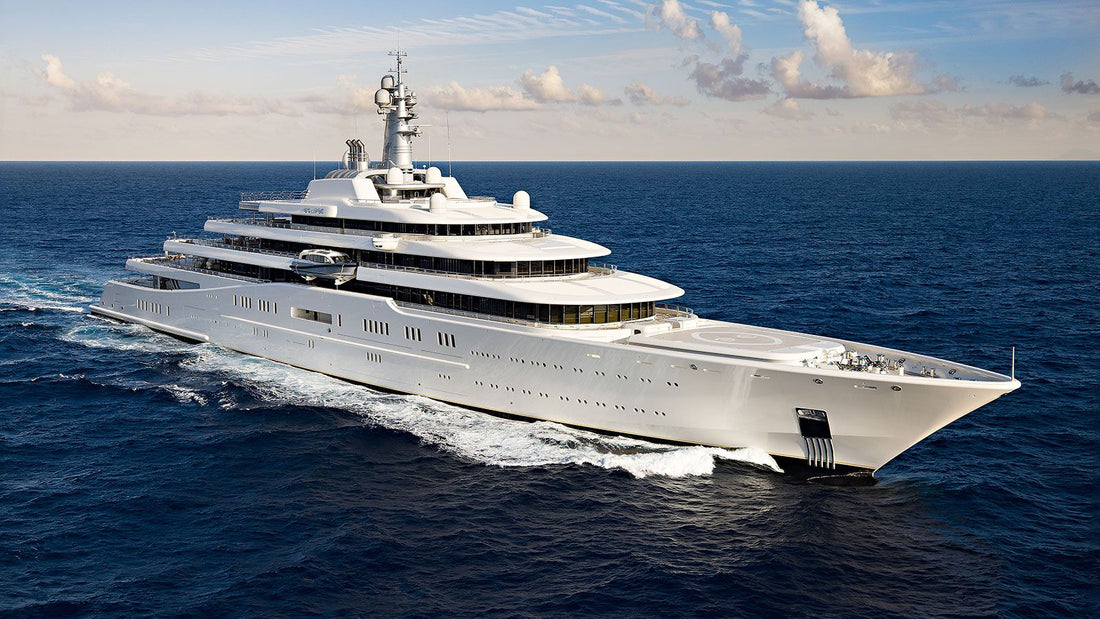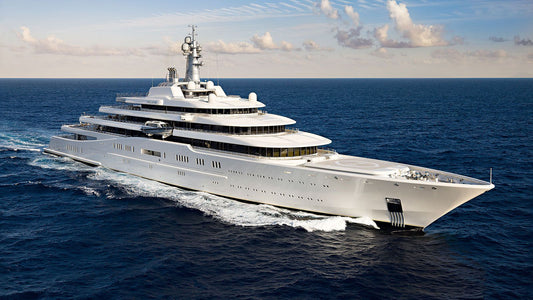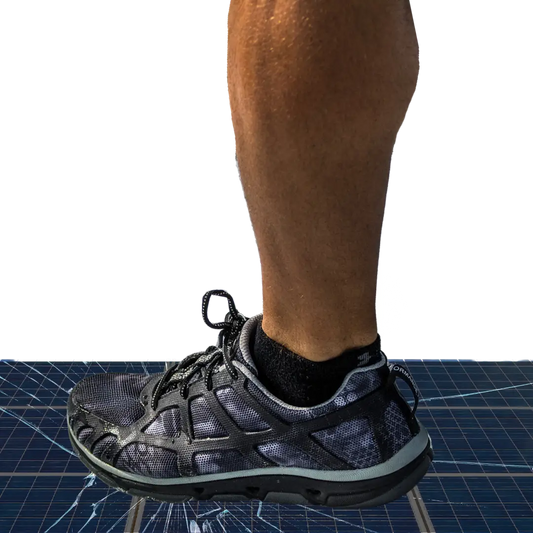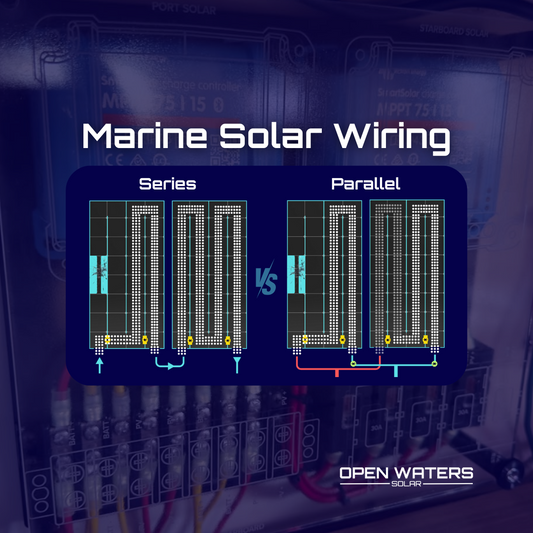Impact of Superyacht Noise on Marine Life

Share
Ocean-going superyachts introduce significant underwater noise that can disrupt marine ecosystems, especially in key yachting regions. Whales, dolphins, and seals rely on sound for communication, navigation, and hunting, so anthropogenic noise poses a serious threat to their survival (WWF Arctic Programme, n.d.). Scientists rank underwater noise pollution as one of the most critical emerging issues for ocean health, with some considering it the next global threat after climate change and chemical pollution (SuperyachtNews, n.d.). Chronic noise in busy Atlantic waters, such as along shipping lanes or yacht cruising grounds, has been steadily increasing and is linked to changes in marine mammal behavior and health (Blair et al., 2016).
Observed Effects on Marine Life
Underwater noise can cause a range of short- and long-term impacts on marine mammals (Clear Seas Centre for Responsible Marine Shipping, n.d.; WWF Arctic Programme, n.d.). Notable effects include:
-
Interference with Communication: Loud background noise masks whale and dolphin calls, reducing the range over which they can communicate or echolocate prey (Clear Seas Centre for Responsible Marine Shipping, n.d.). Social groups can become disoriented when their calls are drowned out.
-
Stress and Hearing Impacts: Continuous noise raises stress hormone levels and can lead to temporary hearing loss. In UK waters with heavy ship traffic, noise levels were predicted to temporarily deafen 20 out of 28 studied seals (Jones et al., 2017). Repeated exposure may cause permanent hearing damage over time.
-
Behavioral Changes and Displacement: Marine mammals often alter their natural behavior to avoid noisy areas. They may pause feeding, dive for longer, or flee important habitats in search of quieter waters (WWF Arctic Programme, n.d.; Clear Seas Centre for Responsible Marine Shipping, n.d.). This displacement from feeding or breeding grounds can have long-term population effects.
-
Feeding and Navigation Problems: Noise in the same frequencies used by whales and dolphins can mask the sounds of prey and ocean cues. Humpback whales in the Western North Atlantic, specifically Stellwagen Bank, showed significantly fewer foraging events and slower diving when a ship’s noise was nearby, indicating that loud vessels directly impede their ability to feed (Blair et al., 2016). Reduced foraging success over time can lead to poorer health or lower reproductive rates.
-
Injury or Worse: In extreme cases, sudden intense noises such as sonar blasts or explosions can startle or physically injure marine mammals, potentially causing strandings or death (Clear Seas Centre for Responsible Marine Shipping, n.d.). Even non-lethal noise contributes to cumulative stress, making animals more vulnerable to other threats.
These impacts are evident across species. A global review found that 100 percent of studied marine species, over 100 species in total, showed negative responses to underwater noise (WWF Arctic Programme, n.d.). Large whales, including blue, fin, and the endangered North Atlantic right whale, are particularly affected by low-frequency noise that travels far in water, while dolphins and toothed whales are sensitive to higher-frequency disturbance. Seals and sea lions, which spend time both underwater and at the surface, can also be harmed. Harbor and grey seals near busy shipping lanes experienced temporary hearing loss from chronic noise exposure (Jones et al., 2017). Overall, evidence indicates that superyacht noise, alongside commercial shipping and other sources, contributes to a “cacophony” that stresses marine life, disrupts critical behaviors, and diminishes habitat quality (WWF Arctic Programme, n.d.). According to oceanographer Sylvia Earle, undersea noise pollution is comparable to "the death of a thousand cuts." She explains that while individual sounds may not seem critically concerning, the cumulative noise from shipping, seismic surveys, and military activities has drastically altered the underwater environment over the past 50 years. Earle emphasizes that this high level of noise is inevitably having a "hard, sweeping impact on life in the sea" (Earle, 2013, p. 136).
Noise Sources from Superyachts
Superyachts generate underwater noise through several mechanisms. When a yacht is underway, the largest source of noise is typically the propellers. As propellers spin, they create areas of low pressure that form and collapse tiny bubbles, a process called cavitation. The collapse of these bubbles produces loud broadband noise. Cavitation noise, especially from the vortex at the propeller tips, accounts for an estimated 80 to 85 percent of the underwater noise of a ship under power (Clear Seas Centre for Responsible Marine Shipping, n.d.). This noise dominates the low-frequency range and can propagate over long distances in water. The fast speeds and large propellers of many superyachts mean they can produce underwater sound levels similar to those of commercial vessels. In the Atlantic, where superyachts transit between cruising grounds such as crossings to the Caribbean or navigating busy coastal corridors, their propeller noise adds to the chronic background noise that marine mammals contend with.
Aside from propellers, onboard machinery and engines contribute a continuous noise output. Diesel engines and generators create vibrations that travel through the vessel’s hull and into the water (Clear Seas Centre for Responsible Marine Shipping, n.d.). These tend to be lower-frequency rumbles or tones. Unlike commercial vessels, which may optimize fuel efficiency through steady-state cruising and frequently operate far from shore, luxury yachts tend to occupy shallower bays where underwater noise has a more concentrated impact on marine life. The confined acoustics of these coastal areas can amplify noise levels, potentially disrupting local marine ecosystems, altering animal behaviors, and increasing stress levels in species that rely on sound for navigation and communication. Unlike the open ocean, where sound disperses more freely, shallow coastal environments cause sound waves to reverberate and linger, intensifying the effect of continuous noise pollution.
Superyachts often operate their engines at higher loads for extended periods to power onboard systems, including lighting, air conditioning, navigation equipment, and guest amenities. This means a yacht can emit noise pollution day and night, even when not moving. In calm, otherwise quiet bays that many Atlantic and Caribbean yacht destinations feature, the low-frequency hum of a large yacht’s generator can dominate the underwater soundscape. The combined impact of propulsion noise and continuous hotel load demands results in sustained underwater acoustic pollution that affects marine life in these areas.
Mitigation Strategies for Noise Reduction
Reducing superyacht noise pollution requires a combination of operational measures and technological solutions. Yacht owners and designers are increasingly exploring ways to quiet their vessels to protect marine life while also improving onboard comfort. Key mitigation strategies include:
-
Speed and Route Management: Slowing down can dramatically cut noise output. A slower-turning propeller produces less cavitation, and engines work less hard. Studies confirm that reducing ship speed is one of the most effective ways to lower underwater noise (Clean Arctic Alliance, 2024). Yachts can transit at economical speeds, especially in ecologically sensitive areas such as known whale habitats or marine sanctuaries, to minimize disturbance.
-
Propeller and Hull Design Improvements: Naval architects are developing quieter propeller designs to mitigate cavitation noise. One innovation is the use of small pressure-relief holes in propeller tips, such as the “PressurePores” technology, which has been shown to greatly reduce tip vortex cavitation noise with minimal loss of propulsive efficiency (SuperyachtNews, n.d.).
-
Alternate Power and Solar Solutions: One of the most promising innovations to reduce generator use is integrating high-efficiency solar panels on superyachts. Solar energy can offset a yacht’s power needs during daylight and charge batteries for use after dark, cutting down the hours that diesel generators must run (Absolute Yachts, 2023). By harnessing solar power, some yachts can maintain essential services without relying on a generator, reducing emissions and eliminating noise and vibrations (Absolute Yachts, 2023).
References
Absolute Yachts. (2023, May 29). Absolute and solar panel technology. https://www.absoluteyachts.com/en/2023/05/29/absolute-and-solar-panel-technology/
Blair, H. B., Merchant, N. D., Friedlaender, A. S., Wiley, D. N., & Parks, S. E. (2016). Evidence for ship noise impacts on humpback whale foraging behavior. Proceedings of the Royal Society B: Biological Sciences, 283(1833), 20160371. https://doi.org/10.1098/rspb.2016.0371
Clean Arctic Alliance. (2024). IMO’s 2023 revised guidelines on underwater noise. https://cleanarctic.org
Clear Seas Centre for Responsible Marine Shipping. (n.d.). Underwater noise and marine mammals. https://clearseas.org
Earle, S. (2013). The world is blue: How our fate and the ocean’s are one. National Geographic Society.
Jones, E. L., Hastie, G. D., Smout, S., Onoufriou, J., Merchant, N. D., & Thompson, D. (2017). Seals and shipping: Quantifying risk and mitigation. Journal of Applied Ecology, 54(6), 1930-1940. https://doi.org/10.1111/1365-2664.12949
SuperyachtNews. (n.d.). Controlling underwater noise. https://superyachtnews.com
WWF Arctic Programme. (n.d.). Underwater noise. https://arcticwwf.org



